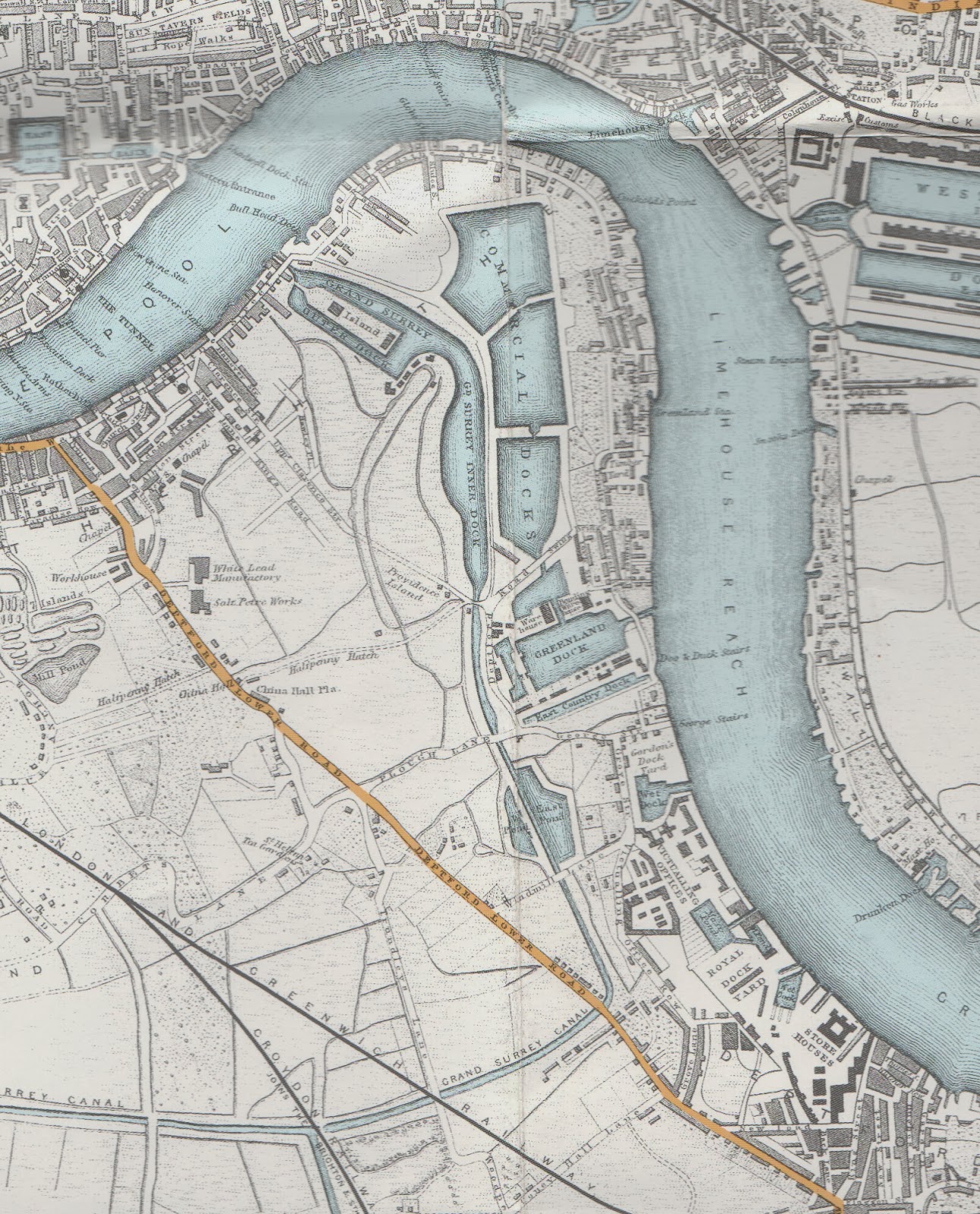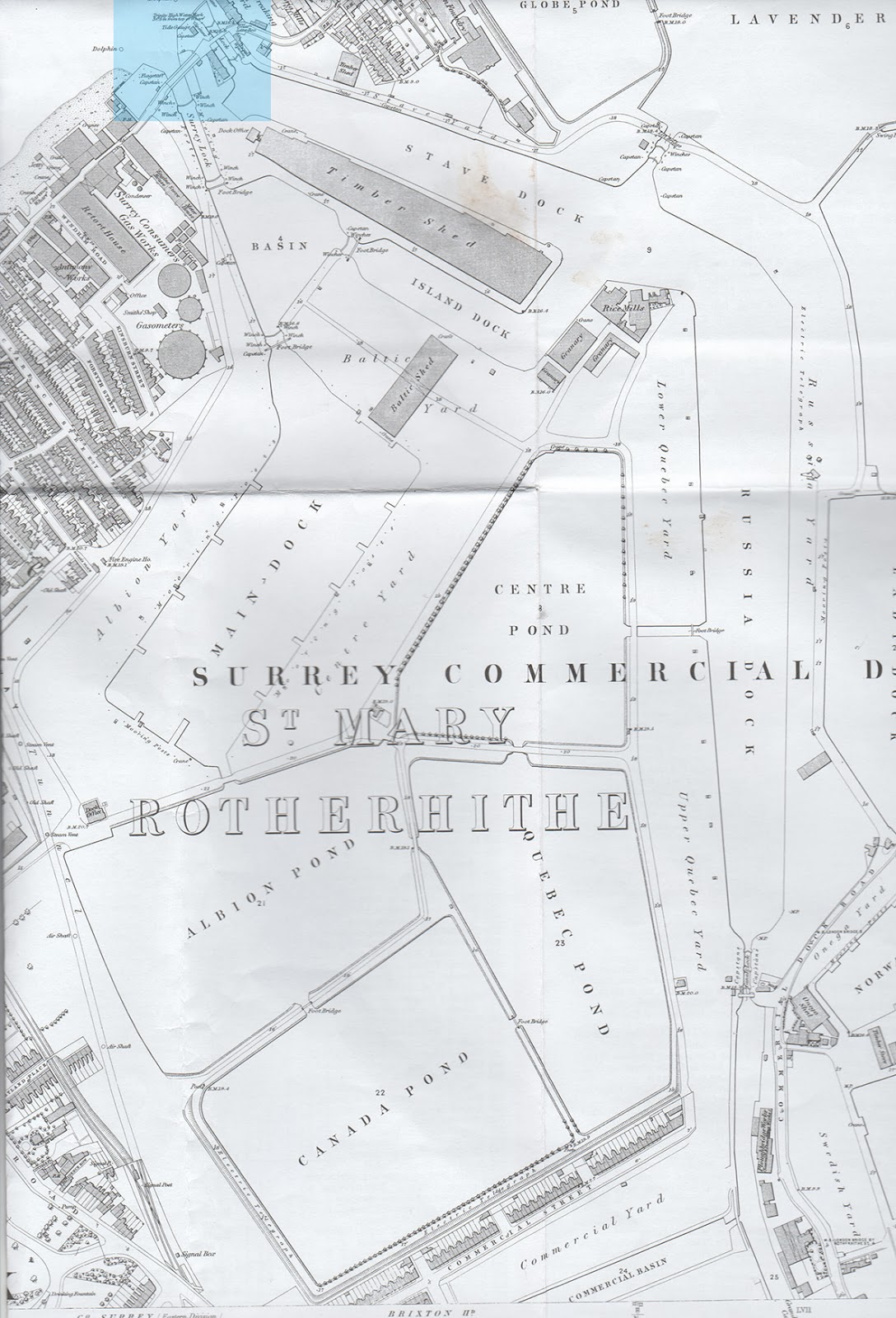Another circular sent out for general distribution. It's the first I've heard of the
What's On In Rotherhithe Group. You live and learn. I checked their website but it is not currently functional, so I'm not much the wiser, but the website is one of the items on their agenda, so I assume they are looking at getting it fixed. There's a
short introduction on Southwark Council's website.
An interesting point is that there is no information about the heritage collection now housed at Redriff Primary School (presumably the one that used to be at the Lavender Pump House Museum) and whether or not it is accessible to the public. I would very much like to know the answer to that, because I find it sad that the collection is no longer available to the general public.
Signage is also another interesting topic. I was in Russia Dock Woodland the other day and noticed that there is still sign pointing to a "heritage museum" that no longer exists. Much of it is also all very faded and it would be good to know what is being planned.
February 24th 2014 at 6pm at Sands Film Studios
Agenda
1. Welcome from Chair & acceptance of any urgent business not on agenda
2. Apologies
3. Minutes 21 Oct 2013
4. Matters arising
5. Rotherhithe Society Update (Mark Parker; Chair of RS Steering Group)
6. Rotherhithe Website www.worg.org.uk
[not currently functional]
7. River Piers (RH)
8. Signage in Rotherhithe including Interpretation Boards & Finger Posts
9. WORG Publicity including postcards & mugs
10. Heritage Collection
11. Albion St update (PEA)
12. Events including Mayflower 2020
13. A.O.B
14. Date of next meeting
Minutes: What’s on in
Rotherhithe Group, 6pm October 21st
2013 at Sands Films
Present
Amanda
Squires (AS); Michele Page-Jones (MPJ); Olivier Stockman (OS); Pauline
Adenwalla (PEA); Robert Hulse (RH); Sue Heath-Downey (SHD);Father Graham
(GP);Rebekah Clark (RC)
1 AS welcomed attendees & accepted an agenda item
from RC concerning Stave Hill
2 Apologies
Gary Jones; Colin Smith; Jackie Rose; Tony
Evangelou (TE)
3 Minutes 24/06/2013
Accepted as a true record
4 Matters arising including update on
river pier & heritage collection
There has
still been no response regarding Clarence Wharf from Simon Hughes. PEA had
approached Sellars but they had not been supportive. It was felt that with the
400th anniversary of the sailing of the Mayflower approaching in
2020 that WORG should keep emphasising the need for a river boat pier in
Rotherhithe at every opportunity. AS suggested RH contact James Fearnley who is
standing as a Rotherhithe Ward councillor at the next council elections to see
if he would support the idea of an additional river pier
Action RH to contact James Fearnley
The heritage
collection is now at Redriff Primary School but there seems to have been no
publicity regarding its access to the public
Action MPJ to write to the
Headteacher to enquire about access & also to see if WORG could hold their
February meeting there & view the collection
Any other matters arising would be dealt with in the agenda
TE has indicated that he is unable to carry on running the
WORG website.AS has received an offer from Simon Wilks via FOSP to help with
the website. PEA has also expressed a willingness to update the site.
SHD pointed out that she had been unable to access the site.
Action PEA to
investigate & contact Simon to discuss a way forward
6 Reprint of
Rotherhithe Map
MPJ had applied under CGS for funding for a reprint of the
map and had been successful. WORG had been awarded £1005. WE also received some
money from British Land (SQ Shopping Centre); the Mayflower & the Angel. We
now have a good supply of maps but do need to always look for funds for future
reprints.
Action MPJ to
investigate North Southwark Environmental Trust to see if they would support a
future reprint
Action Father Graham to
ask if the Amicable Society would also be supportive
7 Signage in
Rotherhithe including Interpretation Boards & Finger Posts
There was general agreement that the signage in Rotherhithe
is poor. Signage is
not co-ordinated across the peninsula, often a collection of different signs
exist in the same location providing conflicting and unreliable information.
Signage is particularly important as often the route is not immediately obvious
Action MPJ to email
WORG members to ascertain where finger posts are needed & approach James
Oates (LBS Planning) with this information
AS agreed to collate
signs & interpretation boards including both pictures & information
Also there is a great need for either revamping existing
Interpretation Boards or providing new ones. The Board at Cumberland Gardens
was a prime example of a board that needed physically renewing but with the
approach of the 400 year anniversary of the sailing of the Mayflower updating
also
Action CGS funding to
be applied for. See agenda item 9
8 WORG Publicity
including banner and postcards
A replacement WORG banner had been bought by AS
Action AS to email
round some ideas for Rotherhithe postcards
9 CGS BIDS
Apply for interpretation boards at Surrey Water; Cumberland Gardens;
Horse Drinking trough Surrey Quays Rd.
Also outdoor gym at Cumberland Wharf
Renovation of Scotch Derrick see agenda item 14
Action MPJ
10 Albion Street Update
The Christmas Market will take place on 22/23/24 November
& the planning is going well
The pop up shop in the empty premises in Albion Street is
going ahead but there are no firm details as yet
St Olave’s Square is the subject of a CPO by the council but the
owners of the toilets are still appealing against the council’s decision to
turn down their planning application
LBS has proposed that the Old Library site be developed by
itself as social housing but there is still no decision on the ground floor use
PEA is putting a number of CGS bids to improve the street
scape
11 Rotherhithe Society
AS reported that at the moment there is a steering group chaired
by Mark Parker looking at the possibility of a Rotherhithe Society which is envisaged
as a voice from the community. It is important that this group is truly
representative & also that it does not take over from long established
groups. The steering group will be displaying promotional material at the
Christmas Market on the WORG stall
12 Events
Christmas Market 22/23/24 November
BRChoral Society Christmas Concert 21st December
Open House September 20 & 21 2014
Open Squares Weekend 14/15 June 2014
13 Community Asset
Listing
PEA explained that the attempt to list the Albion had failed
but there was no reason not to resubmit. She is also trying to list it with
English Heritage but does need photos of the interior which are proving
difficult to track down
14 Commercial Wharf
& Dockhead Crane
MPJ & PEA reported that this crane is in a sorry state of
repair & indeed appears to be a health & safety hazard. The whole of
Commercial Wharf is very neglected at the moment but it is possibly going to be
redeveloped alongside the new Docklands Settlement. It was decided to apply for
CGS funding in order to highlight the plight of the Scotch Derrick & keep
it in the public eye
Action MPJ to make a
CGS bid for refurbishment
15 Additional Agenda
Item. Stave Hill Ecology Park
RC said that Stave Hill Ecology Park intends to put forward a
bid for section 106 funding and would like the support of the What’s on in
Rotherhithe Group.
The Group agreed this and requested RC send a draft letter to
MPJ to endorse & forward to LBS
Action RC & MPJ
16 A.O.B.
AS reiterated the fact that the community notice boards were
just that & should display items of interest from the whole community &
not just those relevant to the key holder.
17 Date of next meeting
Next WORG meeting Monday 24th February 2014 6pm at
Sands Films
Although Redriff school are happy for us to view the heritage
collection it would not be possible to also hold our meeting there due to time
constraints. Therefore a separate visit
will be arranged in the New Year
 In this pack two maps are included, representing west London and east
London in 1889. Booth was a remarkable man who set out to assess how
wealth was distributed across the main residential areas of London. His
undertaking was staggering. Appalled by the poverty he witnessed in
the dockland areas he set about colour coding every house in every
street according to how well off the families who lived in them were.
His lowest rank is "Lowest Class. Vicious, semi-criminal, going up to
"Upper Middle and Upper Classes. Wealthy." Between the two he
identified five classes to represent the "general condition of the
inhabitants." The maps he created as a result of his research were used
to tackle social problems derived from poverty, and to plan reforms.
In this pack two maps are included, representing west London and east
London in 1889. Booth was a remarkable man who set out to assess how
wealth was distributed across the main residential areas of London. His
undertaking was staggering. Appalled by the poverty he witnessed in
the dockland areas he set about colour coding every house in every
street according to how well off the families who lived in them were.
His lowest rank is "Lowest Class. Vicious, semi-criminal, going up to
"Upper Middle and Upper Classes. Wealthy." Between the two he
identified five classes to represent the "general condition of the
inhabitants." The maps he created as a result of his research were used
to tackle social problems derived from poverty, and to plan reforms.

















